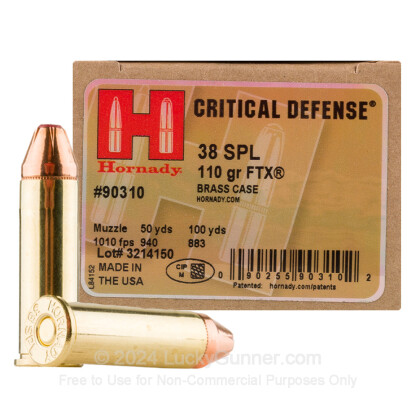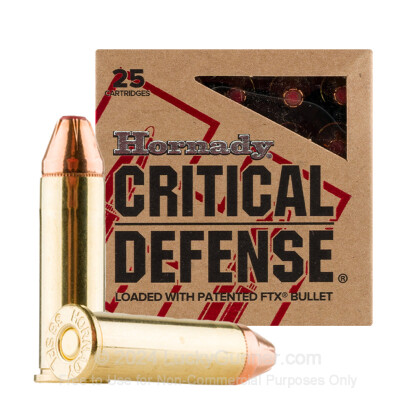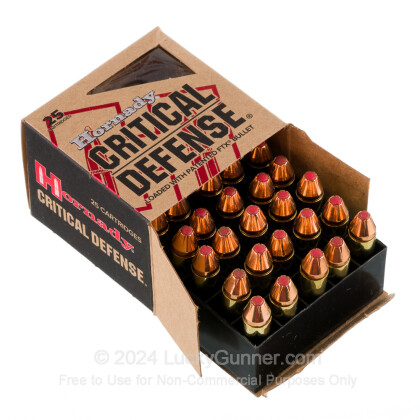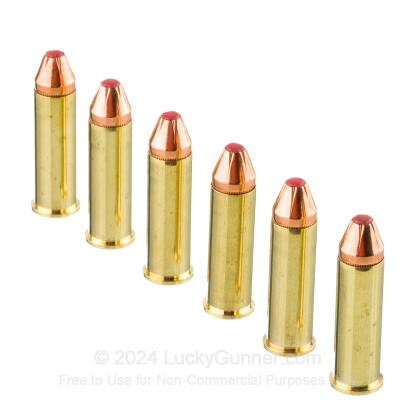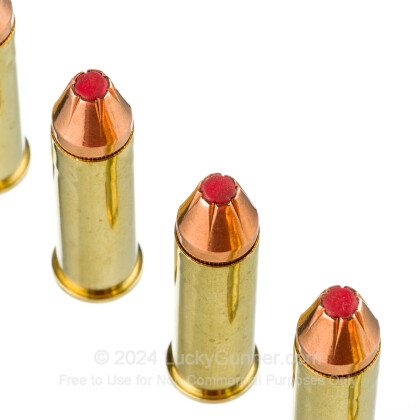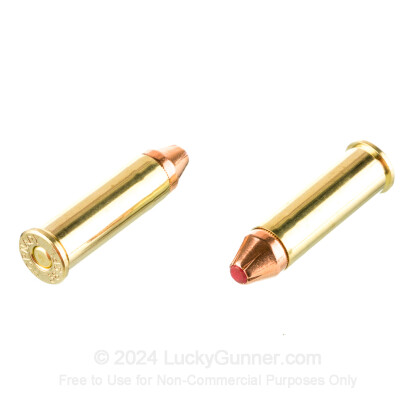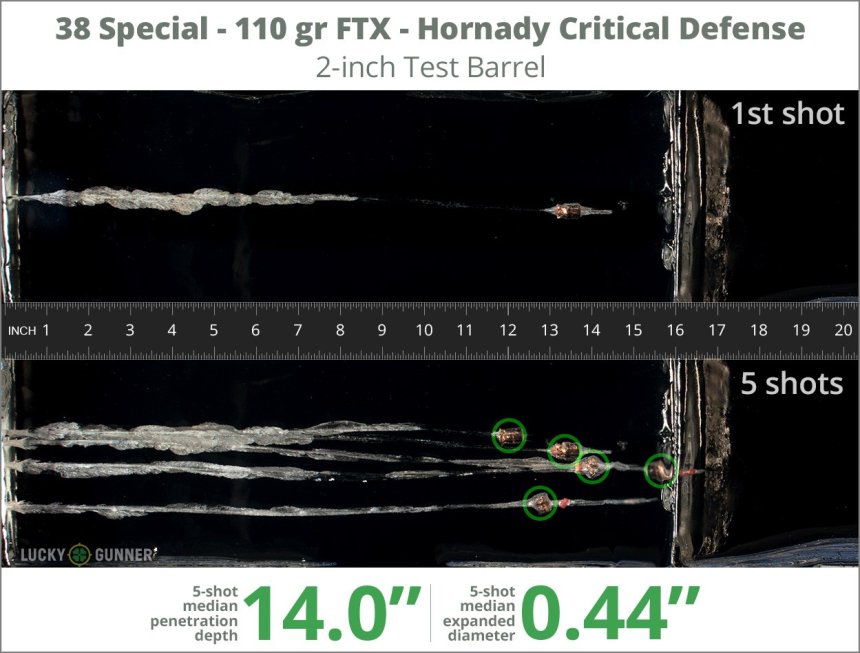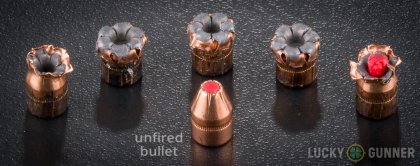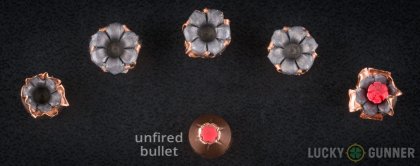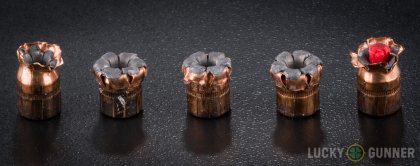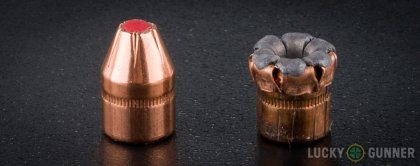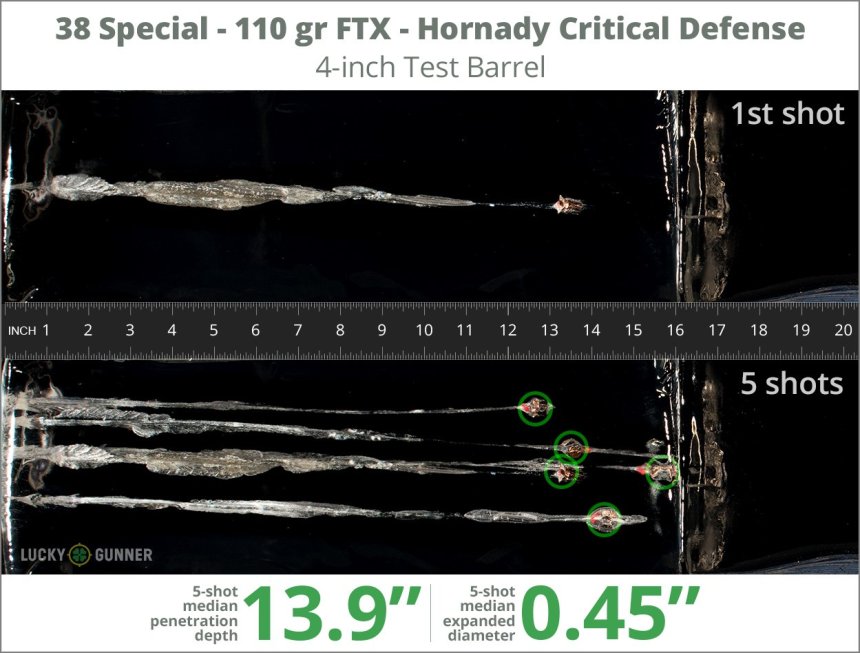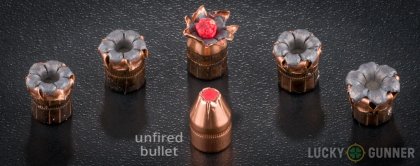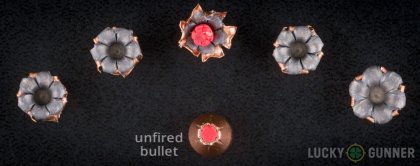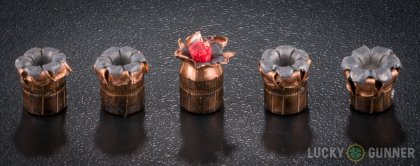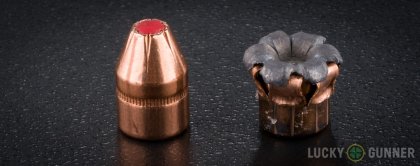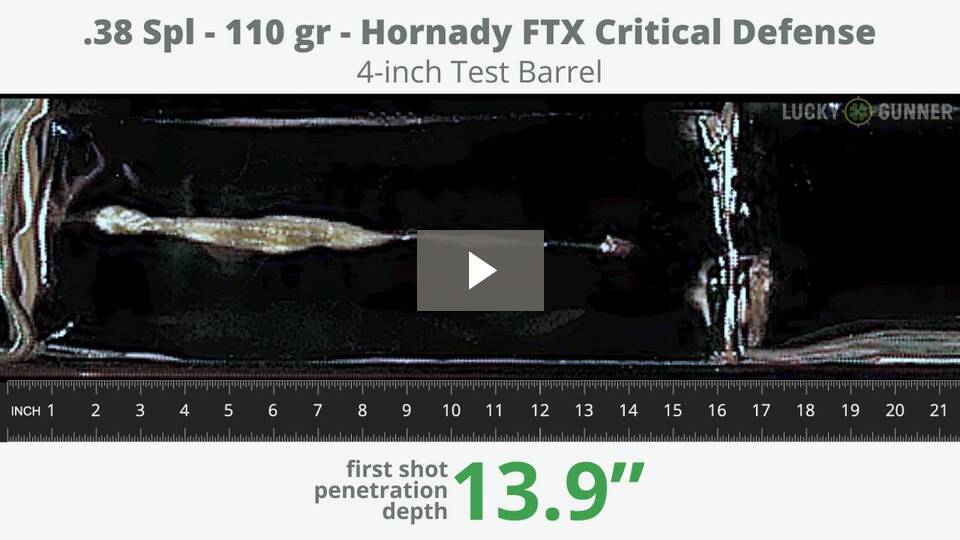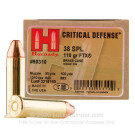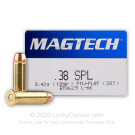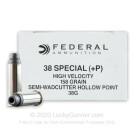Excellent choice for .38 Special snubs, however....
-
Performance:
-
Value:
-
Quality:
by Mort AZ on 4/4/2020
I am generally of the opinion that, in a .38 Special snub-nosed revolver of a 2" or less barrel length, using +P higher pressure cartridges is not giving one a significant enough ballistic advantage to mitigate the downsides of the +P's extra blast and recoil (...not to mention additional stress on your small firearm-- which does matter more in such small, lightweight sidearms that are made of clever combinations of weight-saving materials-- as well as the real potential for more underpenetration from any marginal velocity increases, which often are only as much an increase as the normal variances in velo' seen in regular pressure cartridges from shot to shot, anyway...). Phew, that was a mouthful. Point being, in a 2" or less barreled snubby, there just isn't much realistic benefit to using +P ammo-- so it's not usually a critically significant factor, such as it might actually be while using +P in a 4-6" barrel, or especially so as a realistic flexibility option in .357 Magnum revolvers of those lengths. Therefore, for a .38 Special snubbie, the prudent choices do come from the set of regular pressure cartridges.
However, one downside that the snubbie revolver has always been saddled with is its teeny-weeny barrel, not affording much time to burn a charge... then combined with the cylinder gap bleed, you have a gun that has no problem generating a lot of sting and pop in the hand, but often also has lots of trouble generating enough velocity and energy to reliably expand a bullet. So, for years, stuff like the semi-jacketed soft lead hollowpoints, or the lead wadcutters or semi-wadcutters... these were the bullets that might usually kinda probably for-the-most-part pretty much expand by smushing into a mushroom, hopefully while penetrating okay, and then probably kinda usually pretty much for-the-most-part "get the job done."
Then, sometime around the year 1999 (i.e., the Space Age...), Americans invented what we now know as "technology," and bullet designs and materials have been dramatically improved ever since. With this new-fangled "technology," there are basically two directions ammo makers can go with hollowpoints for snubbies... wide-mouthed, and pucker-mouthed. (Actually, most bullets seem to be medium mealy-mouthed, but that is besides the point here....) Wide-mouthed is pretty good it seems (e.g., see the nifty little Federal 130gr Micro HST... reliably expanding at lower velocities, and reducing that cylinder gap bleed normally leaking immediately forward from around the nose of the bullet itself, by bringing the case wall/neck right up as far front as it can go, making "flat" topped bullets and cartridges... but that is a different review; this is for the pucker-mouthed FTX boolits...).
The Hornady Critical Defense 110gr FTX bullet seems to perform excellently. It reliably expands and then comfortably meets the penetration threshold (i.e., it averages about 14" from a snubbie barrel). The expansion is not very dramatic, but it seems to be a good balance of reliability, consistent penetration, and a fairly decent wound cavity for a regular .38 Special bullet. In addition to catalyzing reliable expansion, the FTX flex-tip (read: "the eraser") has the added benefit of preventing the bullets' hollowpoint cavity from becoming clogged with gunk and lint-- not just during its entrance after being fired, but also preemptively plugged for maintenance, as many snubbies will be carried around in pockets and pocket holsters that are gunk-heavy environments. (Plus, this bullet "does not count" as a JHP in New Jersey; which, in and of itself is totally insane on so many levels-- including reality-- but this is nevertheless a good thing for New Jerseynese people, pragmatically speaking.) And, as a few folks have pointed out, the triangular conical shape of the bullet head, and the pointy nose of the hollowpoint cavity and flex tip, definitely make this cartridge really easy to reload when using speedloaders and strips, almost sort of like a "reverse-negative-space-beveled-magwell."
Accuracy is as good or better than you are (...but probably not as good as Buffalo is, since a man's got to know his limitations...), and recoil is very manageable (e.g., it is less hot than say, Sig Sauer Elite 125gr FMJ target .38 Special)-- and, ejection is easy, too, because of the slick nickel-plated cartridge casings. There is a lot of solid practical thinking that went into this cartridge's design. Alas, it is not perfect....
I have used and carried these for many years now, coupled with an LCR for a BUG. I think that one of the things that makes the bullet a reliable expander at roughly 850fps out of a less-than-2" barrel-- and probably also what aids in making the flex-tipped "eraser" work so well to uniformly expand the tight jacket-petals-- is that the nose of the bullet is soft. Really soft tip, both the jacket and the lead nose. This means that, even just being regularly toted around in a traditional police speedloader holster, some of the tips of the FTX bullet are going to get misshapen and bent by movement and gravity, bumping into to surface surroundings. Not enough warping to pop the "eraser" out, but enough to make it bulge a little... especially if two or more of the jacket petals get smushed a little flat. It sure LOOKS like this asymmetrical front end warping would cause some destabilization and accuracy issues... perhaps even velocity and expansion issues... but I absolutely do not know that for sure; it is purely a speculative guess based on reason. ***And you should not get hung up on this minor observation, because it is not a deal breaker.*** Just try to treat your ammo well, and periodically check your bullets to see if they got dinged, or perhaps bent while loading and unloading... and so just replace the warped ones with new ones, and then use the warped ones to practice with. At five to seven yards, this front-tip denting "issue" probably means nothing. But, since I cannot ever know whether or not "today will be the day" where I need to make a perfect 20yard shot to save lives... well, I just don't chance it, and I swap the warped-nose bullets for new cartridges. If you treat your ammo well, this is not an issue that occurs more than a few times a year (but if you carry these long enough, you'll notice it...). I find this tip-denting happens just the same with the Critical Defense 9x19 115gr bullets, when they get loaded and cleared (e.g., hitting the feed ramp, ejected and dropped, etc.).
All in all, though, an excellent choice for a .38 Special snub-nosed revolver. Is it "the best?" It is for me, as there are certain ways I carry and certain likely conditions under which I'd probably have to shoot that do make this Hornady choice nudge out the little Federal 130gr Micro HST... but, as they says on the internetz: Your mileage may vary.
Lastly, it's super fun to say, "Hornady." And the little "eraser" in the bullet heads look so retro-cool in a little black snubbie... reminds me of the little 8-shot ring cap guns we played with as kids (...I guess we all aspired to be urban muggers with "Saturday Night Specials," ...or something...). Be safe, kids!

